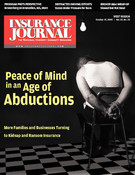The Obama administration reported that nearly 6,000 people were killed and a half-million injured last year in vehicle crashes connected to driver distraction, a striking indication of the dangers of using mobile devices behind the wheel.
The Transportation Department recently brought together experts over two days for what it called a “distracted driving summit” to take a look at the highway hazards caused by drivers talking on cell phones or texting.
Transportation Secretary Ray LaHood said the administration would work with Congress to develop ways of curbing distracted driving. According to LaHood, the meeting solicited ideas to address the problem “similar to what went on with seat belts and [blood-alcohol limits of] 0.08 where you really educate the public, where you tell people that they have to take personal responsibility for these things.”
“You see people texting and driving and using cell phones and driving everywhere you go, even in places where it’s outlawed, like Washington, D.C. We feel a very strong obligation to point to incidents where people have been killed or where serious injury has occurred,” LaHood said.
Officials said that 5,870 people were killed and 515,000 were injured last year in crashes where at least one form of driver distraction was reported. Driver distraction was involved in 16 percent of all fatal crashes in 2008.
The new data underscored the major problem of distractions involving young drivers. The greatest proportion of distracted drivers were those age 20 and under. Sixteen percent of all under-20 drivers involved in fatal crashes were reported to have been distracted while driving.
Eighteen states and the District of Columbia have passed laws making texting while driving illegal and seven states and the district have banned driving while talking on a handheld cell phone, according to the Insurance Institute for Highway Safety. Many safety groups have urged a nationwide ban on texting and on using handheld mobile devices while behind the wheel.
In July, the Virginia Tech Transportation Institute found that when drivers of heavy trucks texted, their collision risk was 23 times greater. Dialing a cell phone and using or reaching for an electronic device increased risk of collision about six times in cars and trucks.
The Virginia Tech researchers found the risks of texting generally applied to all drivers, not just truckers. A separate report by Car and Driver magazine found that texting and driving is more dangerous than drunken driving.
Congress is watching. Democrats have introduced legislation that would require states to ban texting or e-mailing while operating a moving vehicle or lose 25 percent of their annual federal highway funding. The Obama administration has not taken a position on the bill.
Some groups want tougher laws on distractions. The National Safety Council wants a total ban on cell phone use while driving. The Washington-based Advocates for Highway and Auto Safety wants federal rules that restrict talking and texting by drivers of tractor trailers, motor coaches and large vans.
Other groups have focused on texting, which has grown from nearly 10 billion messages a month in December 2005 to more than 110 billion in December 2008, according to CTIA-The Wireless Association, the cellular phone industry’s trade group.
The Governors Highway Safety Association recently reversed course and said it would support new laws banning texting behind the wheel. The Alliance for Automobile Manufacturers, which represents 11 automakers, including General Motors, Ford and Toyota, said it supports a ban on texting and phone calls using handheld devices.
President Obama signed an order directing federal employees not to engage in text messaging while driving government vehicles and encouraging those doing business with the government to ban texting while driving.
Topics Personal Auto
Was this article valuable?
Here are more articles you may enjoy.


 Hartford: 10-Year Analysis Shows Shifts in Common, Expensive Small-Business Claims
Hartford: 10-Year Analysis Shows Shifts in Common, Expensive Small-Business Claims  Florida Jury Returns $779M Verdict for Family of Security Guard Killed at Gambling Cafe
Florida Jury Returns $779M Verdict for Family of Security Guard Killed at Gambling Cafe  WTW to Acquire Newfront in Deal Worth Up to $1.3B
WTW to Acquire Newfront in Deal Worth Up to $1.3B  What to Expect in 2026: US P/C Results More Like 2024
What to Expect in 2026: US P/C Results More Like 2024 


